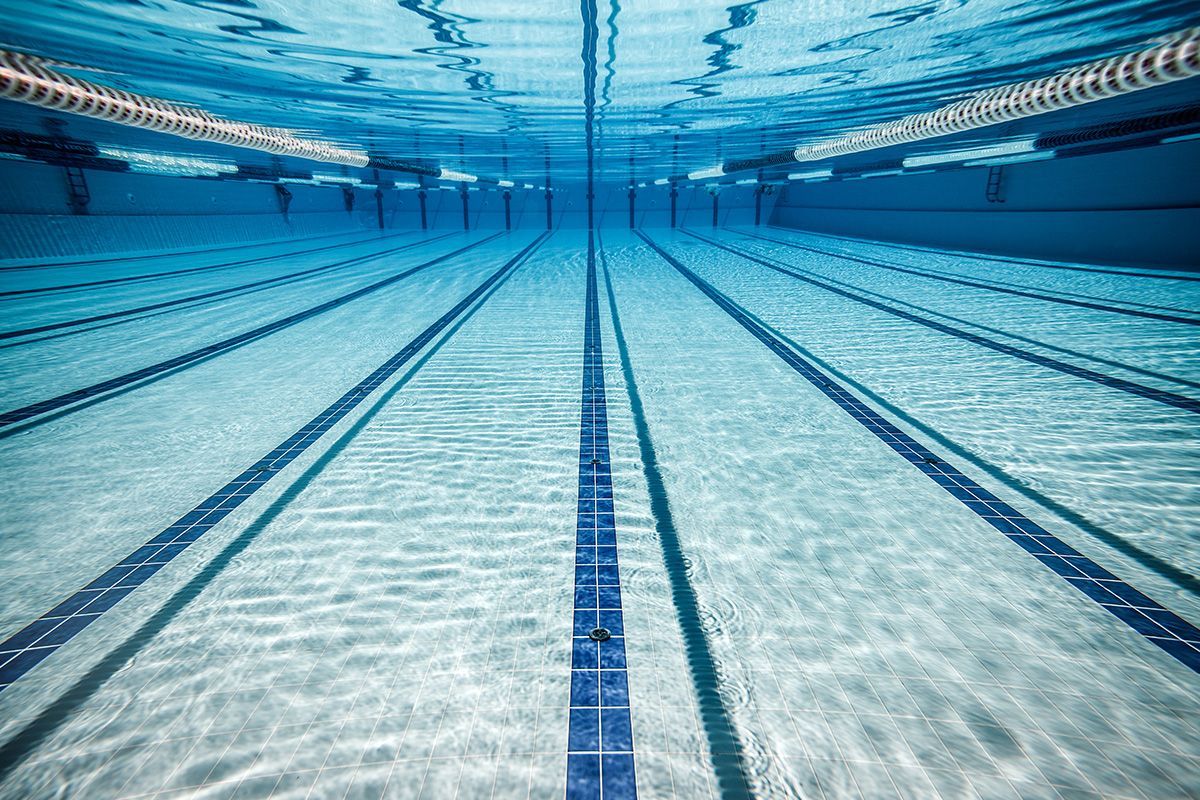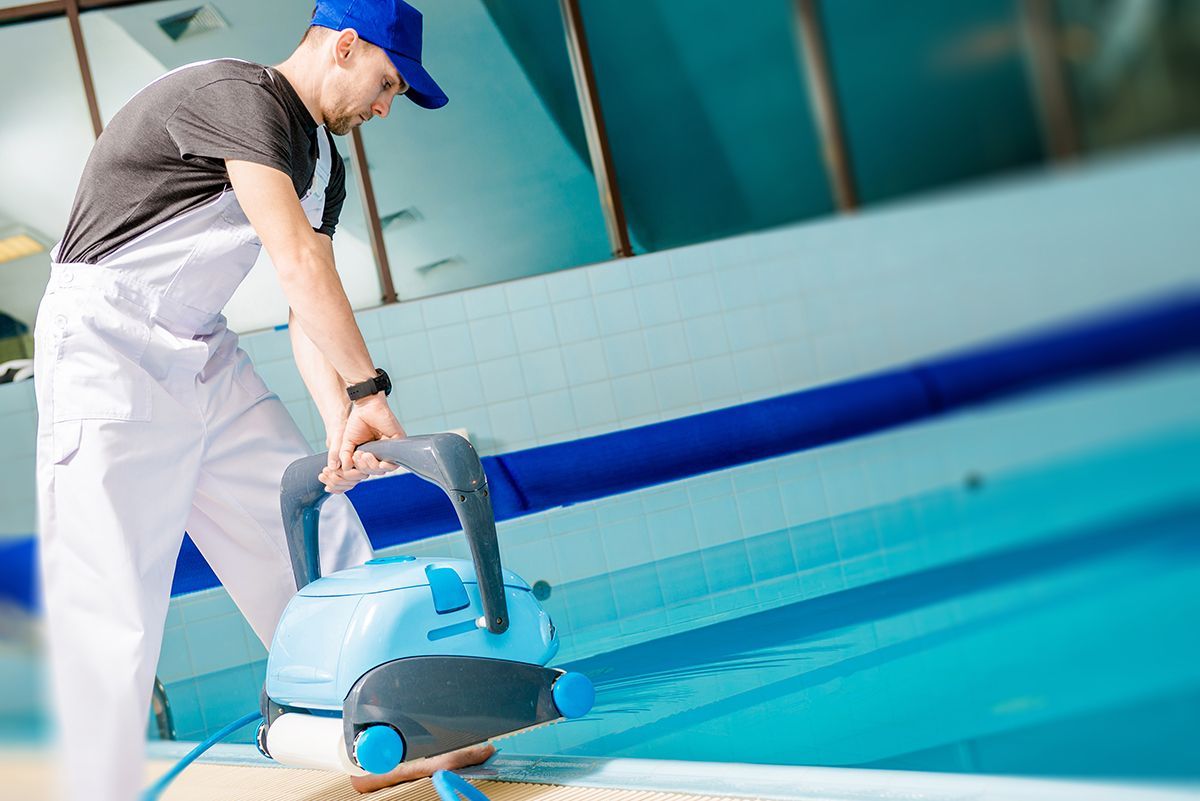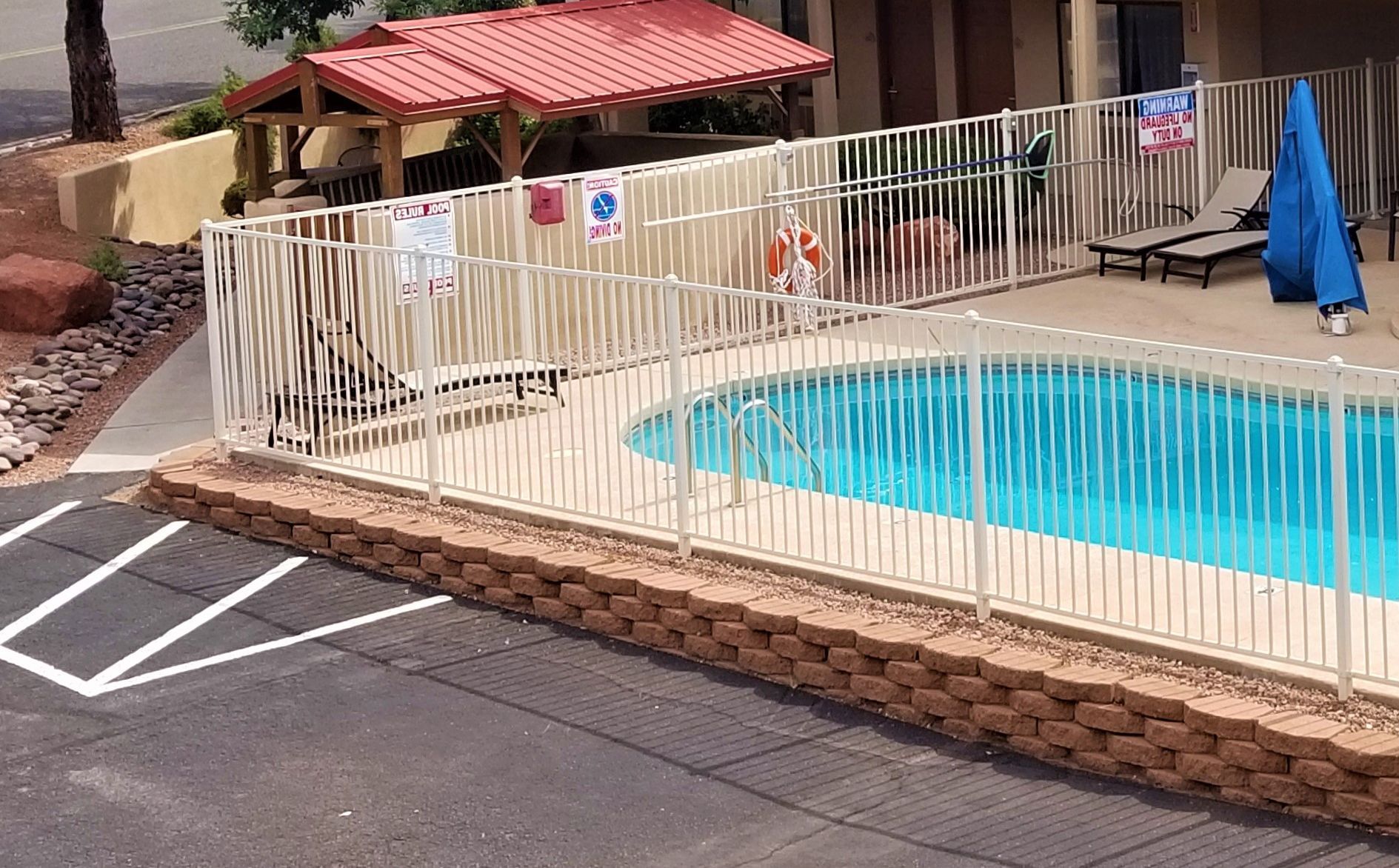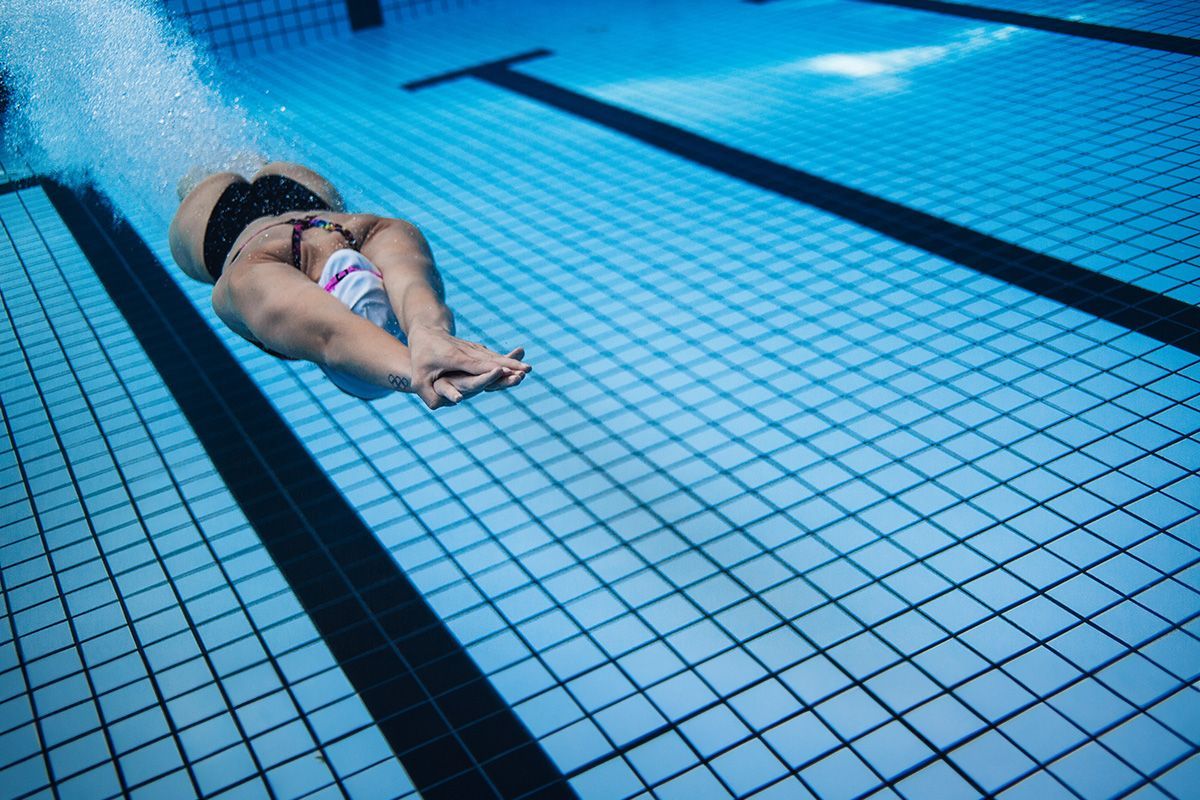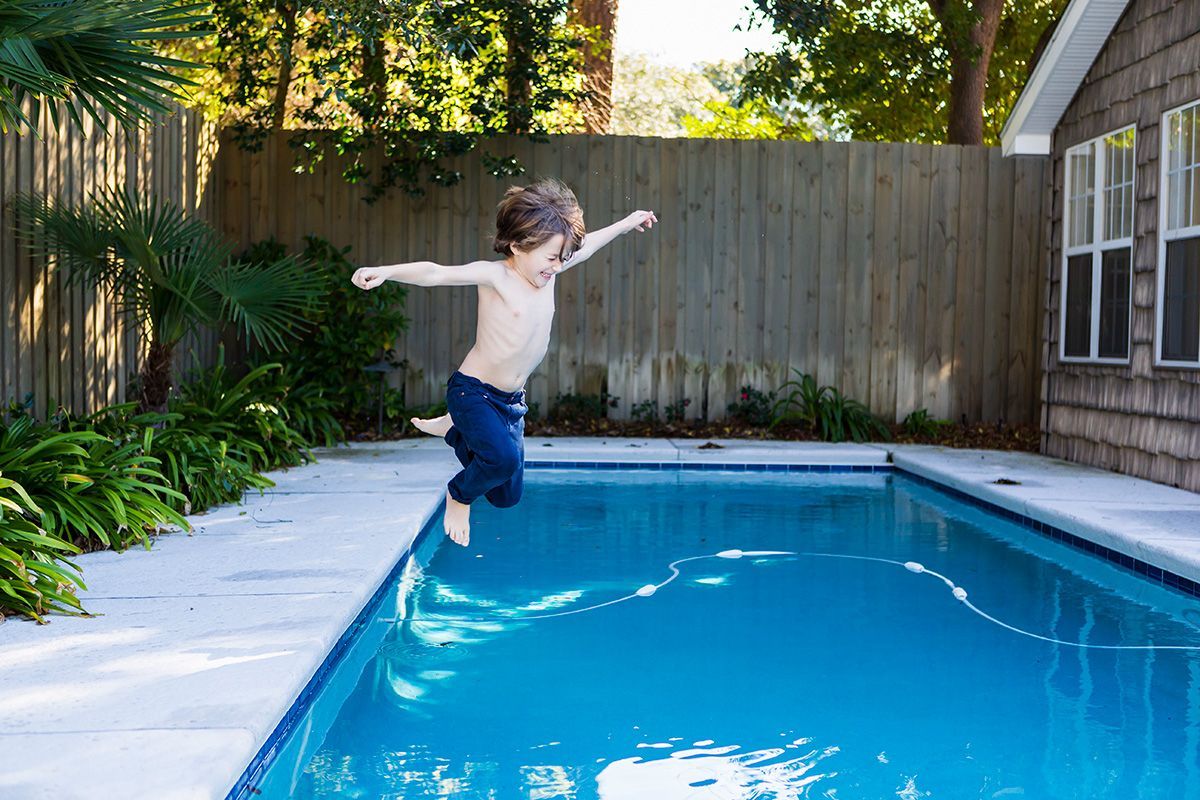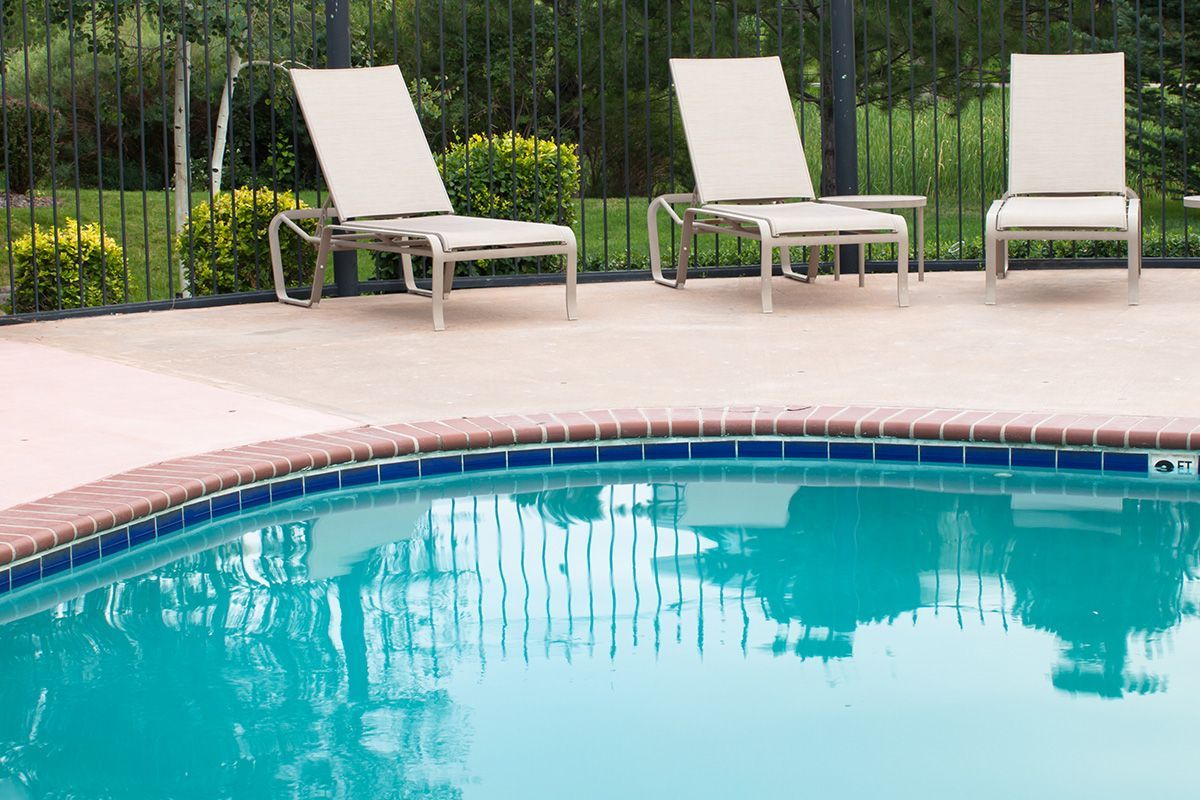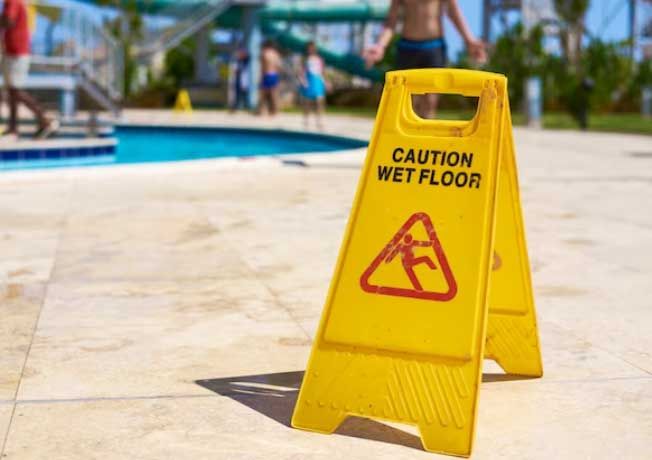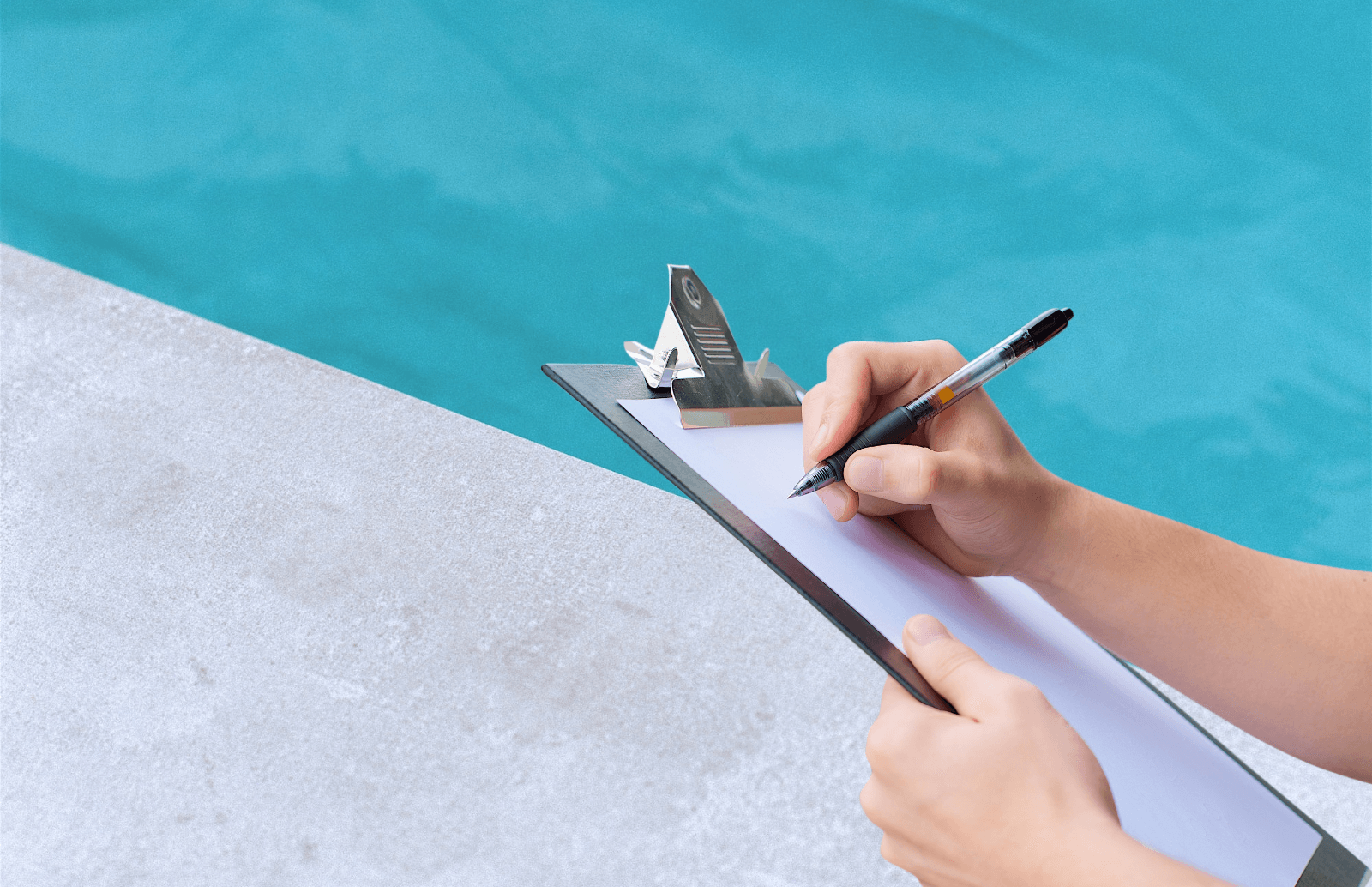Tips For Maintaining Your Pool Between Inspections
Maintaining a pool is an essential task in order to keep it clean and safe for swimming. Although inspections are important to ensure that all necessary maintenance tasks are completed, there are some simple tips that can be followed between inspections to help maintain the pool. This article will provide an overview of those tips and how they can benefit a pool owner.
The first step in maintaining a pool is to keep it free of debris. This includes leaves, twigs and other materials that may have blown into the water, as well as cleaning the sides of the pool regularly. In addition, skimming the surface with a net or vacuum on a regular basis can help remove any larger items from the water. This will not only prevent them from becoming lodged in filters or pumps, but also reduce the amount of chemical treatment required for keeping the pool clean.
Finally, testing and adjusting the chemical levels of the water should be done periodically so that it remains balanced and healthy for swimming. It is important to keep these levels within specific parameters based on factors such as pH levels, chlorine and alkalinity. Not only does this help prevent contamination from bacteria and algae growth, but also helps ensure swimmers remain safe while using the pool.
By following these simple tips between scheduled inspections, a pool owner can enjoy many years of safe swimming in their own backyard oasis.
Preparation For Pool Maintenance
Prior to any maintenance of a pool, it is important to understand the pool's anatomy and the associated components. The basic elements include the filtration system, sanitizer, circulation pumps, piping and valves. Additionally, other items such as skimmers and ladders should be considered. Proper maintenance of these elements is essential to ensure the safety of the users and prevent damage from occurring. Furthermore, regular inspections by a certified professional are crucial for identifying any potential issues that could lead to further complications if not addressed in a timely manner.
Pool owners should also develop a cleaning regimen that includes vacuuming, brushing, and skimming. Vacuuming removes any dirt or debris that has settled on the bottom of the pool while brushing helps loosen dirt particles and algae from the walls or floor. Skimming removes floating debris from the surface while also helping to maintain proper water chemistry balance. These three steps should be done at least once per week depending on how often the pool is used.
Regular testing of chemical levels such as pH, alkalinity, calcium hardness and chlorine are also important for maintaining clean water conditions in pools. Testing kits can be purchased at local hardware stores or online retailers for convenience and accuracy in measuring each chemical. If adjustments need to be made due to low or high levels of chemicals detected during testing then it is important to
follow manufacturer instructions when adding chemicals into the pool water.
Water Balance And Maintenance
Once the necessary preparation is complete, it is important to ensure proper water balance and maintenance in order to keep the pool safe and healthy. It is imperative to check the pH levels of the pool as well as its alkalinity and chlorine levels. The pH level should be between 7.2 and 7.8, while alkalinity should range from 80 to 120 ppm and chlorine should be between 1 and 3 parts per million (ppm). If any of these parameters are out of balance, adjustments must be made in order to restore them back to their optimal levels.
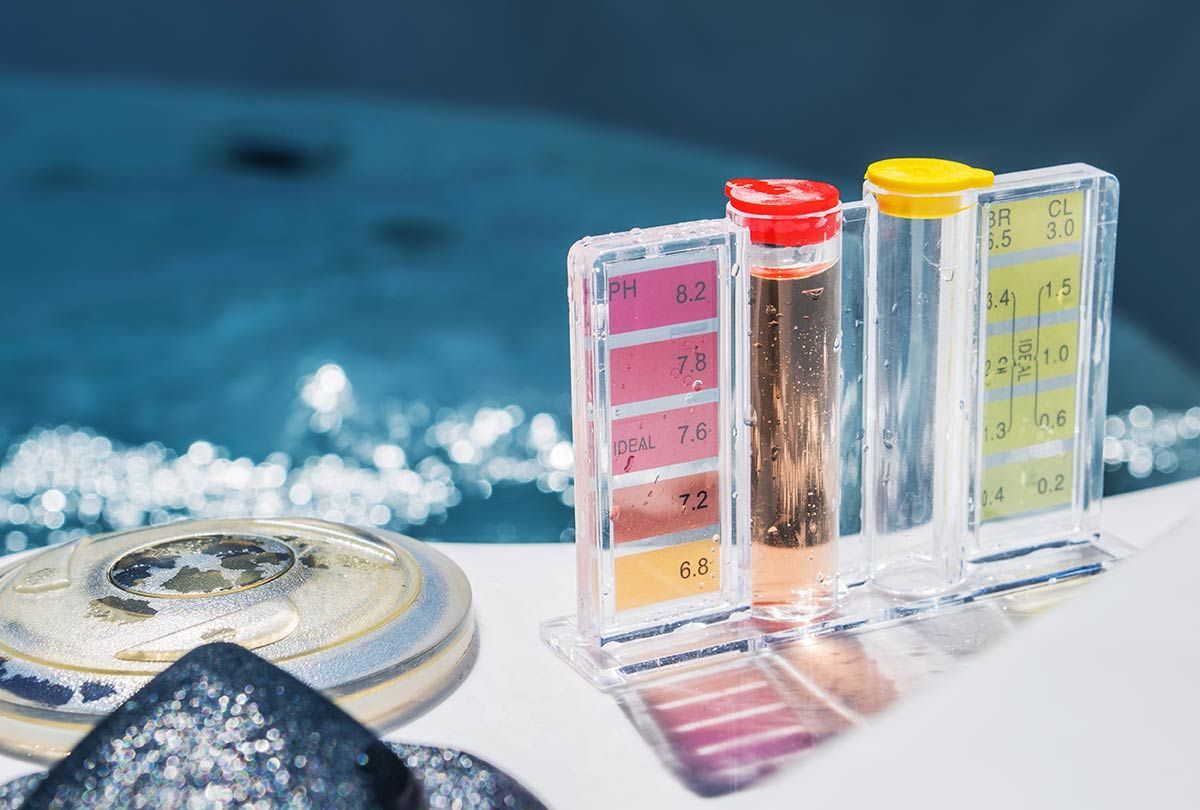
It is also important to monitor the water chemistry on a weekly basis, checking for debris such as leaves or insects that may have accumulated. Additionally, it is necessary to brush the walls and floor at least twice a week in order to prevent algae growth or staining of the surface. Furthermore, skimming off floating debris with a net every few days can help maintain a clean pool environment.
Regularly testing the water quality will ensure that any problems can be addressed quickly before they become major issues that require professional assistance. Performing regular maintenance will also help extend the life of the pool equipment by preventing corrosion or damage due to exposure to harsh chemicals or other environmental factors. It is critical for owners of pools to adhere to these maintenance guidelines in order to ensure a safe and enjoyable swimming experience for all users.
Cleaning The Pool Walls And Floor
Cleaning the pool walls and floor is a crucial part of maintaining a safe and healthy swimming environment. It is important to understand that regular brushing of the surface is essential to prevent algae build-up. A nylon or polyester brush with stiff bristles should be used to scrub the entire surface, paying particular attention to corners and other areas that are prone to algae build-up. Vacuuming should be done at least once a week, regardless of whether there is visible debris in the pool. This will help ensure that dirt and other contaminants do not settle on the pool floor or walls for extended periods of time. It may also be beneficial to use an algaecide at least once a month as part of your routine maintenance program. Algaecide helps break down organic matter that can lead to cloudy water or unsightly discoloration on the pool walls and floor. Following these steps will help keep the pool clean and free from buildup between inspections by a professional service provider.
Vacuuming Your Pool
Now that the walls and floor of your pool have been cleaned, it is important to keep up with regular maintenance in order to maintain a healthy swimming environment. Vacuuming your pool can be done to help remove dirt and debris from the bottom of the pool. Here are some tips for vacuuming your pool:
1. Make sure all the filters have been cleaned before starting the vacuuming process.
2. Use a submersible vacuum cleaner with an appropriate suction head for your type of pool.
3. Move slowly around the entire perimeter of the pool, ensuring that you reach all areas at least once.
4. When done, rinse off any debris left on the vacuum head and return it to storage until next use.
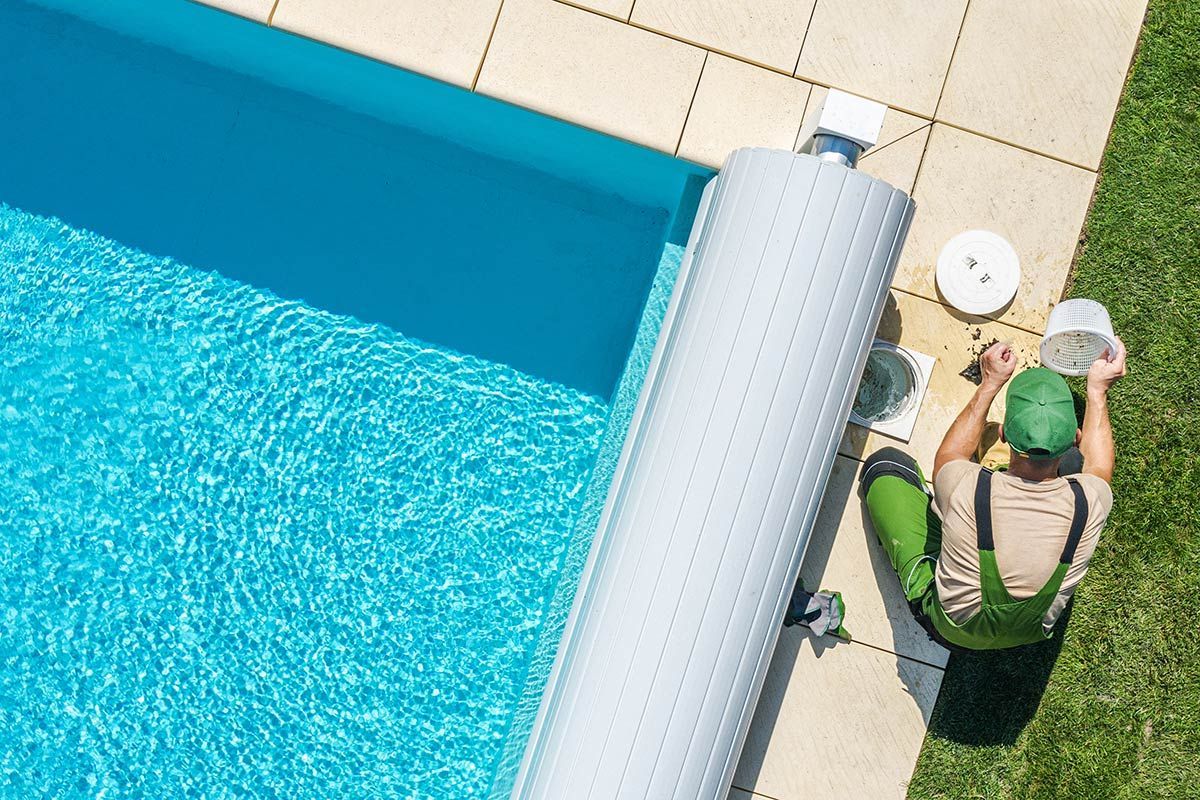
Vacuuming your pool regularly will help to remove sediment and other material deposited on the bottom surface while also helping to reduce algae growth in more heavily used pools. This simple task can make a huge difference in keeping your pool clean and inviting for swimmers as well as prolonging its life expectancy by reducing wear on its components over time.
Regular Skimming Of Debris
Pool skimming is an essential part of routine maintenance. Debris such as leaves, bugs, and other organic material can quickly accumulate in a pool and lead to bacterial growth, discoloration of the water, and filter clogging. Keeping the surface of the pool free from debris helps improve the water clarity and reduces maintenance time.
The best way to keep on top of pool skimming is by using a wide-mouth net attached to a telescopic pole. This allows for more efficient removal of debris from the entire surface area without having to get into the pool itself. It also eliminates any potential damage that could be caused by stepping on vinyl liners or fiberglass surfaces. Routinely skimming debris off of the surface should be done at least once per week or after heavy rainstorms or windy days when more debris is likely to enter the pool.
If there is excessive debris accumulation that cannot be removed with a net, it may be necessary to use an automatic vacuum cleaner or hire a professional service to do the job. A properly maintained pool will have less visible debris and require less energy consumption for filtration systems as well as reduced chemical usage for sanitation purposes.
Monitoring Chemical Levels
The next step in maintaining a pool between inspections is monitoring chemical levels. To ensure that the water is safe for swimming and to prevent corrosion of the metal components, it is important to maintain proper pH, alkalinity, calcium hardness, and chlorine levels. The following table lists the recommended ranges for those chemicals:

To check the levels of these chemicals, test strips can be used or a digital tester can be purchased. After testing the water, add chemicals as needed to bring the levels back into the recommended range. It may also be necessary to shock the pool periodically when there is an increase in bather load or after heavy rains. When shocking the pool, always make sure to follow the manufacturer's instructions and be sure not to over-shock it. Additionally, remember to clean out skimmer baskets and vacuum regularly when maintaining a pool between inspections.
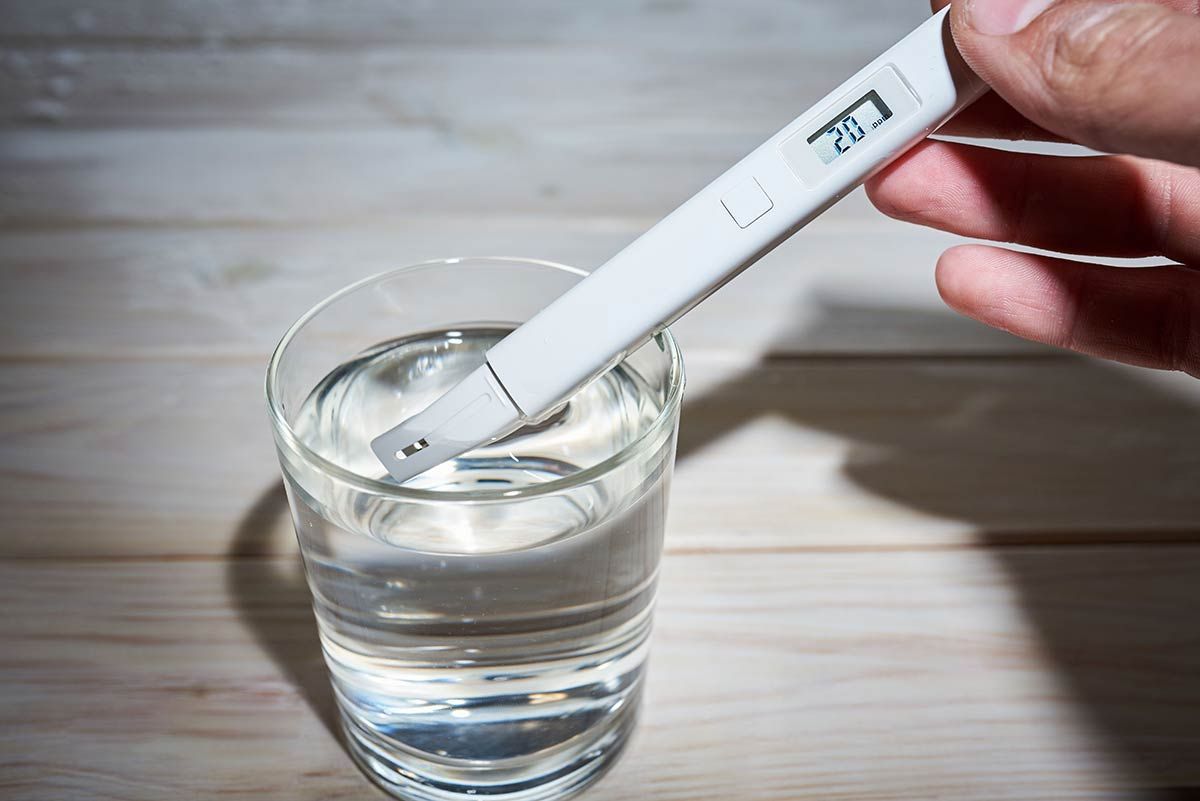
It is important to monitor chemical levels in a pool in order for it to remain safe for swimming and for its components from corrosion damage. Pool owners would benefit from having chemical test kits on hand so they can easily check their chemical levels throughout the season and adjust accordingly. With regular maintenance of debris removal and chemical level monitoring between inspections, pools will remain cleaner and safer all summer long.
Eliminating Algae Growth
Algae growth can be a major problem in pools, and must be addressed in order to keep the water clean and safe. The best way to prevent algae growth is through proper chemical balance. This includes keeping the pH level of the water between 7.2 and 7.8, alkalinity between 80 and 120 ppm, calcium hardness between 175 and 225 ppm, and chlorine levels between 1.0 and 3.0 ppm. Additionally, shock treatments should be done regularly to kill off any unwanted bacteria or algae spores that may have been introduced into the pool from outside sources such as swimmers or rainwater runoff.
Another effective method for eliminating algae growth is to manually brush the walls of the pool weekly with an appropriate brush for the type of material it is made from (e.g., concrete, vinyl, etc.). This will help remove any algae that has already begun to grow on them before it has a chance to spread throughout the entire pool system. Additionally, make sure you are regularly vacuuming up any debris or dirt that may have accumulated on the bottom of your pool as this can also contribute to algal blooms if left unattended.
Finally, make sure you are using an appropriate algaecide product according to manufacturer’s instructions in order to keep your pool free of any unwanted algae growth. Test your pool's chemistry frequently with a reliable test kit in order to ensure that all levels remain properly balanced; this should help minimize any problems with algae growth even further.
Properly Storing Pool Chemicals
Having discussed the steps that can be taken to eliminate algae growth, it is important to consider proper storage of pool chemicals. Chemicals used in swimming pools are corrosive and hazardous, so they must be stored properly to avoid potential hazards.
First and foremost, it is important to store pool chemicals in a cool, dry place away from direct sunlight. Pool chemicals should also be kept away from heat sources such as furnaces or radiators. It is best to store them at room temperature (68-77°F) or cooler. Additionally, pool chemicals should always be stored in their original containers with the lids securely fastened shut.
When storing pool chemicals:
- Keep them in a cool, dry place away from direct sunlight
- Store them away from any heat source
- Store at temperature between 68-77°F
- Always keep in original containers with lids securely fastened shut
- Make sure all chemical containers are labeled correctly
Regular maintenance and proper storage of pool chemicals can help ensure a safe swimming environment for your family and friends. Following these tips will help ensure that your pool remains healthy and free of contaminants between inspections.
Checking Equipment Functionality
It is important to check the functionality of all pool equipment at least once a month. This includes items such as filters, pumps, and drains. Filters should be backwashed or cleaned thoroughly according to their manufacturer's instructions. Pump motors should be checked for any damage, and strainer baskets should be inspected for debris build-up. All drain covers should be checked to ensure they are secure and free from any cracks or breaks. If any of these components are not functioning properly, they need to be replaced immediately.
The chemical levels in the pool water should also be monitored regularly. The chlorine level should remain between 1-3ppm and the pH balance kept between 7.2-7.6ppm for optimal operation of the filtration system and other pool equipment. Additionally, all testing kits used should be stored and maintained according to instructions provided by the manufacturer in order to avoid inaccurate readings due to expired reagents or damaged strips or discs.
Regular cleaning of the pool is essential in order to maintain its appearance and prevent bacteria growth. This includes skimming the surface of the water, scrubbing tiles, vacuuming dirt and debris from the bottom, brushing walls, steps and ladders, checking tile grout lines for algae buildup, removing leaves with a net on a pole, emptying skimmer baskets and manually brushing areas that may have been missed during regular maintenance activities.
Inspecting Parts And Replacing When Necessary
Having inspected the pool and its equipment for functionality, it is now necessary to inspect individual parts and replace them when needed. This is an important step in ensuring that the pool remains safe and clean for users. The following table details what parts of the pool require inspection and potential replacement:
| Part | Frequency | Potential Replacements |
| --- | -------- | ---------------------- |
| Pool Filter | Monthly | Cartridge, DE or Sand Filter|
| Pool Pump | Yearly | Variable Speed, Single Speed or Two-Speed Pump|
| Skimmer Baskets/Hoses/Valves | Weekly/Monthly/Yearly | Skimmer Basket, Hose Kit, Valve Handle Kit |
| Automatic Pool Cleaner Parts | Yearly | Wheels, Tracks, Brushes etc. |
| Salt Cell & Chlorinator Cells | 3 Months - 2 Years | Salt Cell & Chlorinator Cells
Regular inspection and maintenance of these parts will ensure that the pool’s water remains free from contamination and debris. For example, if a skimmer basket is malfunctioning due to wear and tear it should be replaced promptly. Similarly, if a filter cartridge needs to be cleaned more than once a month then it may need to be replaced as well. In addition to inspecting and replacing parts as needed, it is also important to check for any leaks in the plumbing system of the pool. If there are any signs of leaking then immediate action should be taken to repair them before any further damage occurs.
Maintaining the pool by regularly inspecting parts and replacing them when necessary can help keep the pool in good shape between inspections. This will save time and money in the long run while ensuring that users can enjoy a safe swimming experience without worrying about contamination or debris buildup in their pools.
Proper Winterization Of The Pool
Winterizing a pool is an important step in ensuring that the pool remains in good condition during the colder months. It is important to prepare for winter as soon as possible, once temperatures begin to drop and some water may freeze. The following steps should be taken in order to properly winterize a pool:
The first step is to completely remove all debris from the surface of the water. This includes leaves, dirt, algae, and any other matter that may have accumulated in the pool during summer months. All pumps, filters, and other equipment must also be cleaned of any debris before winterizing.
The second step is to reduce the pH level of the water to between 7.2 and 7.6 on a scale of 0-14. To do this, one should add a pH reducer or acid equalizer into the pool until it reaches its desired level. Once this has been done, it is important to shock-treat the water with chlorine or another sanitizing agent to ensure that no germs remain in the water before it becomes stagnant during winter months.
Finally, all skimmers should be closed or blocked off with plugs so that no debris can enter them during winter when they are not being used. Any hoses or pipes connected to the pool must also be disconnected and drained of any residual water before being stored away for winter months. Following these steps will help ensure that one's pool will remain healthy throughout its inactive season until warmer weather returns again.
Covering The Pool During Inclement Weather
Protecting a pool from inclement weather is an important part of pool maintenance. Inclement weather includes rain, snow, hail, and high winds. It is necessary to cover a pool during such weather, as the water inside can become contaminated and the equipment can suffer damage.
Covering a pool with a tarp or other material is one way to protect it. Tarps should be made out of durable materials, such as vinyl or canvas, to ensure they can withstand strong winds and precipitation. Additionally, straps should be used to keep the tarp in place in case of windy conditions. The tarp should also extend several feet beyond the perimeter of the pool to maximize protection.
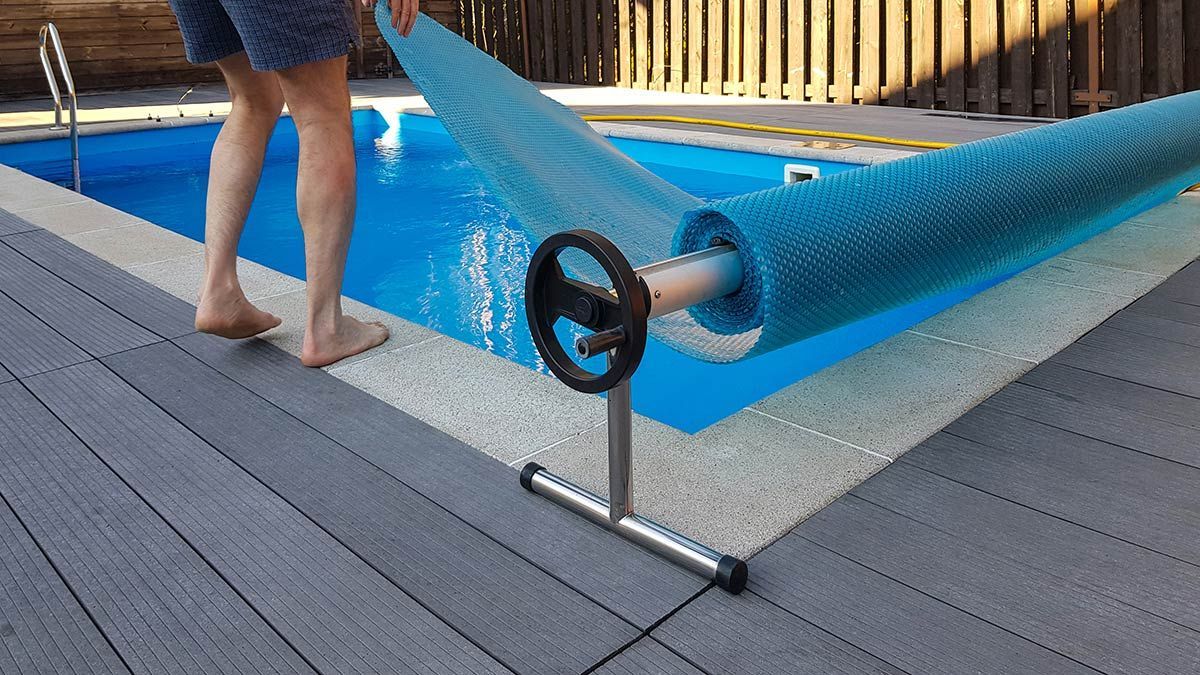
Finally, it is important to regularly inspect the cover for any signs of wear or damage that could compromise its protective properties. It may also be necessary to remove debris such as leaves or branches that have accumulated on top of it. Doing so will ensure that the pool remains protected during inclement weather.
Utilizing Robotic Cleaners
Robotic cleaners are a valuable tool for maintaining a pool between inspections. Robotic cleaners are programmed to continuously clean the walls and floor of the pool, making it easier to maintain the proper chemical balance. These robotic cleaners can remove debris such as leaves, twigs, and other small particles that may otherwise be missed during manual cleaning. Additionally, robotic cleaners can be programmed to clean specific areas of the pool on a set schedule. This allows for less frequent manual cleaning and helps keep overall maintenance costs down.
Robotic cleaners also offer increased safety benefits in comparison to manual cleaning methods. By removing debris from the bottom of the pool, they reduce the risk of slips and falls for swimmers. Furthermore, robotic cleaners do not require harsh chemicals or other materials that can be hazardous to humans or animals when used manually.
Overall, robotic cleaners are an effective way to facilitate routine maintenance of a swimming pool between inspections. They help maintain good water quality by removing debris and help reduce safety hazards while reducing manual labor costs associated with pool maintenance.
Hiring Professional Services To Assess Your Pool
Hiring a professional service to assess your pool is an important step in keeping your pool maintained between inspections. Professionals will be able to provide a comprehensive assessment of the water and chemical levels, as well as any other factors that can affect the quality of the water in your pool.
Here are some benefits to having a professional service inspect your pool:
1. Assurance: A professional inspection ensures that all levels are within acceptable limits and that any necessary repairs or maintenance tasks have been completed correctly.
2. Efficiency: Professional inspections tend to take less time than DIY assessments, which can help save you time and money in the long run.
3. Expertise: Professionals have knowledge and experience in assessing pools, so they know what to look for when it comes to safety concerns or potential problems with the water chemistry or equipment.
4. Peace of Mind: Knowing that your pool has been inspected by a qualified professional can give you peace of mind and confidence in its safety for swimming and other activities.
Periodic inspections by a professional service can help keep your pool safe and healthy between regular maintenance visits from a licensed technician. With their expertise, they can detect any signs of wear-and-tear, recommend preventive measures, check chemical balances, and make sure all parts are working correctly. Doing this will ensure that your pool remains clean, safe and enjoyable for many years to come.
Choosing The Right Service Provider
Finding the right pool service provider is an important step in maintaining a healthy and safe pool. It is important to do research and ask questions before deciding on a service provider. Consumers should look for a provider who has experience and expertise in working with pools, as well as any relevant certifications such as a Pool Operators Certification (CPO).
Consumers should also inquire about pricing plans, warranties, payment terms, and any other services offered by the provider. Additionally, consumers should check references from previous customers to get an idea of their level of customer service.
When selecting a pool service provider, it is important to remember that cost should not be the only factor taken into consideration. The quality of the service and customer satisfaction should be the most important considerations when choosing a provider.
Frequently Asked Questions

1. Professional maintenance services have the knowledge and experience necessary to identify and address any potential issues with the pool, such as identifying evidence of wear or damage.
2. They also have access to specialized equipment which may not be available to the average homeowner, increasing efficiency and accuracy in addressing any problems.
3. Many maintenance services are able to offer additional services beyond regular maintenance, such as installation of new components or seasonal cleaning and inspections.
4. Finally, they can provide advice on how best to care for your pool between inspections and maintain its condition over time.
Overall, while it is possible to maintain your own pool without a professional service, depending on your needs and budget it may be beneficial to consider hiring one of these services for their expertise and specialized knowledge about pool care. Taking these factors into consideration when making this important decision can help ensure that your pool will remain safe and functional for years to come.
Conclusion
It is important to understand the basics of pool maintenance in order to ensure that a swimming pool remains safe and clean.
Regular inspections are necessary for any pool, but there are steps that can be taken between inspections in order to keep it functioning optimally. Algae removal should be done using chemical treatments and brushing, while proper equipment replacement and weatherproofing measures like covers can help protect the pool from damage.
Professional services may not be necessary when following these tips, however they can provide additional assurance that all needs are met. In conclusion, maintaining a pool requires commitment and vigilance, but with the right knowledge it is possible to keep a swimming pool in good condition between inspections.
It is essential to properly care for a swimming pool by removing algae, replacing equipment as needed, and shielding from inclement weather with appropriate covers. Taking these steps will ensure that a swimming pool remains safe and clean for users year-round.
Request a pool safety check today with
Pool Safety Check! Contact us today for a free quote.


